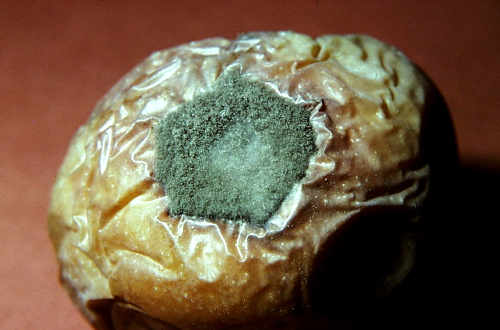Gray mold
Disease
Gray mold
Botrytis cinerea Pers.Fr.
Distribution: Worldwide; common to all fruit-growing regions in eastern North America.
Lesions usually start at the calyx or stem end of the fruit or at wound sites as small water-soaked areas. As lesions age, they enlarge, turning from grayish-brown to light brown, and eventually to a darker brown. White or grayish-white mycelium form on the surface of the rot under humid conditions (A); however, little sporulation occurs at cold-storage temperatures. Apples coming out of CA storage appear firm and tan, and when completely decayed, look like baked apples (B) (compare with blue mold).





 Print
Print Email
Email